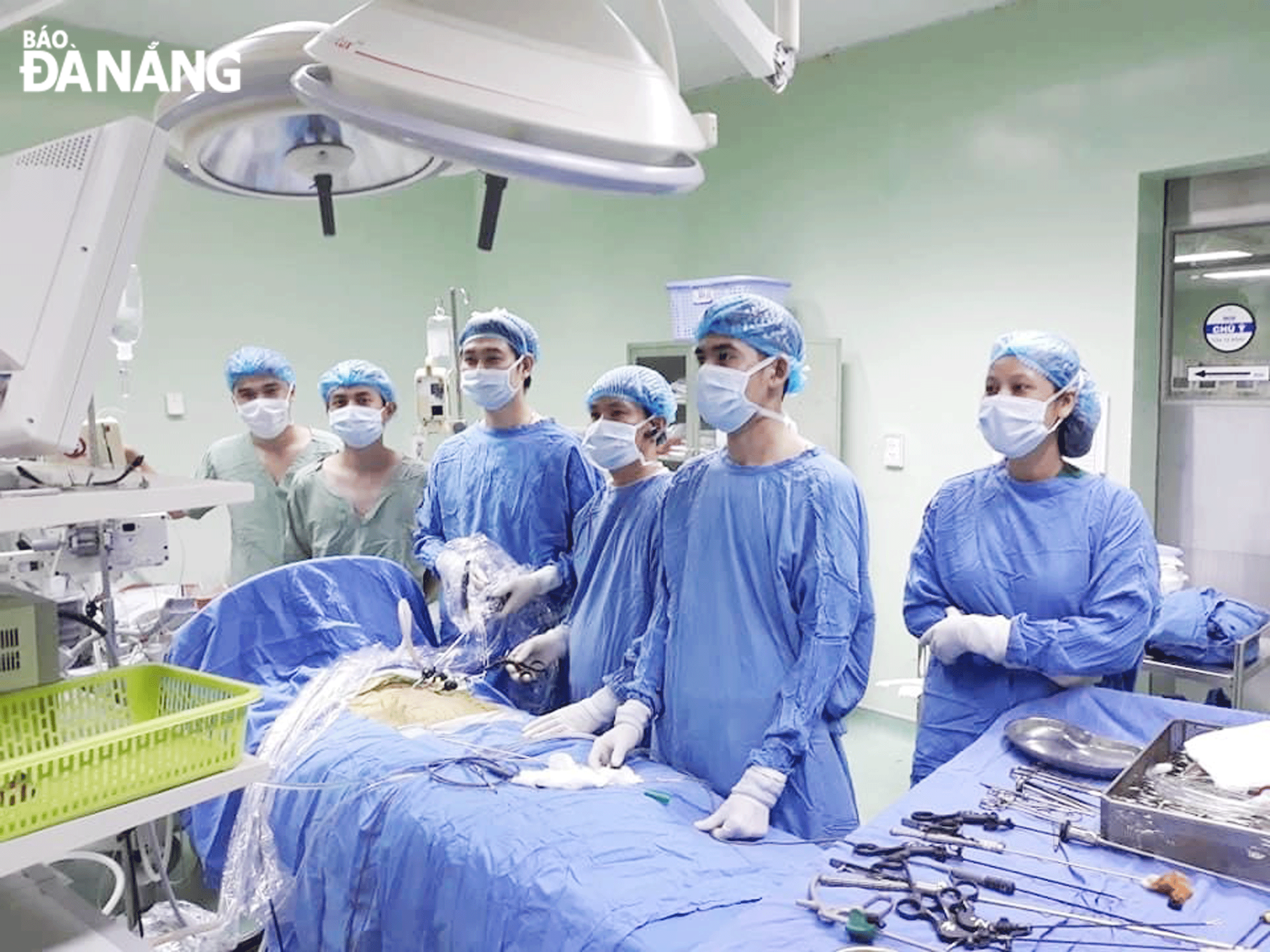New technology to treat children with birth defects in Da Nang
Congenital esophageal atresia is a rare malformation in children. This defect causes disruption of the digestive tract in the tube connecting the mouth to the stomach, making it impossible for breastfeeding immediately after birth. In addition, this defect also causes pneumonia, respiratory failure and many other dangers if not promptly intervened and treated.
 |
| A team of doctors at the Da Nang Paediatrics and Maternity Hospital perform surgery on a baby patient. Photo: PHAN CHUNG |
In recent years, the Department of Surgery at the Da Nang Paediatrics and Maternity Hospital has successfully operated on many cases of this disease using thoracoscopy. This method not only solves this deformity, but also limits thoracic complications caused by open surgery, while ensuring aesthetics and not affecting the child's psychology when they grow up.
The most common congenital esophageal atresia is the type of esophagus that has both intermittent atrophy and this segment plugs into the airway. This defect not only prevents the newborn from drinking milk, but fluid from the mouth and digestive tract can flow into the child’s airway, causing pneumonia and respiratory failure. As soon as the baby is born, the baby shows signs of cyanosis, increased secretions, and foaming, which is life-threatening and requires timely emergency surgery.
The Da Nang Paediatrics and Maternity Hospital continuously receives many cases from medical facilities in the city for examination and treatment of this disease. In the 2012 - 2017 period, the hospital perfected the technique of esophageal plastic surgery in newborns through open chest surgery, increasing the successful treatment rate, reducing the mortality rate and complications related to the congenital esophageal atresia.
Through joint and specialized training programmes, the hospital has developed and mastered thoracoscopic surgery techniques to treat congenital esophageal atresia, in order to minimize sequelae and complications caused by open thoracic surgery technique.
According to doctor Nguyen Phi Phong, the Head of the Department of Surgery of the Da Nang Paediatrics and Maternity Hospital, recently in countries around the world, thoracoscopic surgery to treat congenital esophageal atresia has been favoured.
All operations are performed using endoscopic instruments to minimise intrusion into the infant's chest. Laparoscopic surgery method brings outstanding benefits, small incisions, aesthetics, avoids many complications during surgery due to clear observation, avoids many post-surgery complications and helps pediatric patients recover faster and with less time, and especially limit chest deformities due to open surgery when children grow up.
“This is a complex deformity in children. Thoracoscopic surgery is a difficult technique, in a very small surgical field which is the chest of a newborn. Therefore, to treat this disease, it is necessary to coordinate closely with other departments such as surgery, neonatology, anesthesia and resuscitation, along with modern equipment used in the surgical process.”, said doctor Phong.
Early detection and treatment in children with congenital esophageal atresia is important to protect the child's life. Timely surgery will help the newborn soon return to life with the most basic need of breastfeeding, and will also avoid the risk of dangerous complications that threaten the child's life
In recent times, the Department of Surgery has been a clinical unit with the functions and tasks of examining and treating specialised diseases and defects such as urological, digestive, thoracic surgery, trauma, plastic burns, neurological surgery. In particular, the Department of Surgery is also a surgical unit specialising in treating congenital defects in children.
According to doctor Phong, in order to improve the quality of medical examination and treatment, the Department of Surgery always closely connects leading hospitals in the country such as Central Children's Hospital, Children's Hospital No. 1, Children's Hospital No.2 in Ho Chi Minh City, and cooperate with organizations from the United States, Germany and Italy.
Training has been offered at both home and abroad for the Department’s medical staff to access and master specialised techniques with the purpose of enhancing their professional skills as well as the examination and treatment quality to meet the increasing needs of the people, timely intervention and treatment of dangerous diseases.
Reporting by PHAN CHUNG - Translating by A.THU, T.TUNG